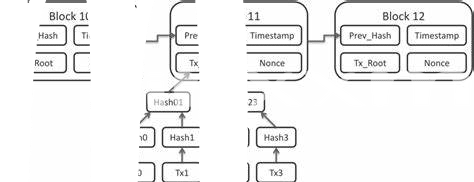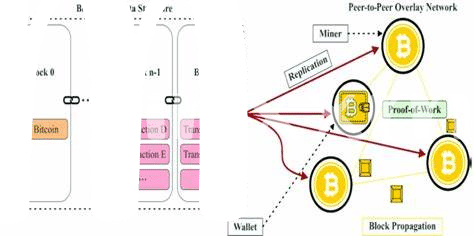🌐 Explore the Basics: What Is a Public Ledger?

Imagine stepping into a big library, where every book tells the story of someone’s money journey – how much they’ve spent, received, or transferred, with each story open for anyone to read. This is what a public ledger is like, acting as a master book for Bitcoin and other digital currencies. It’s an open record, visible to everyone, where every transaction is written down for all to see. Think of it as a big digital ledger that’s shared among a network of computers around the world. Each entry in this ledger is secured through complex math puzzles, making it super difficult for someone to cheat or change the information once it’s been added. This ledger doesn’t just keep things transparent; it builds a trust system, proving that technology can pave the way for honest and open financial systems. Here’s a simple breakdown to make this easier to understand:
| Feature | Description |
|---|---|
| Transparency | Every transaction is visible to anyone who wants to see it – like a book open on a table. |
| Decentralization | Instead of one person or organization controlling the ledger, it’s held on many computers worldwide. |
| Security | Secured by complex math, making it super tough for hackers to mess with. |
| Trust | Creates a system where everyone can see and trust what’s happening without a middleman. |
🔍 Transparency & Trust: How Bitcoin Uses Public Ledgers
Imagine a big, open book where everyone can write down their transactions, and everyone else can see them. That’s the idea behind Bitcoin’s public ledgers. It’s like having a transparent piggy bank online where you can see how much money goes in and out, but not who exactly is behind each transaction, keeping things both open and private. This level of openness builds trust among users because everyone can check the transactions themselves—it’s all out there for you to see. What’s interesting is how this ledger is kept safe and unchangeable through clever math, meaning that once something is written down, it stays there forever. For those diving deeper into how Bitcoin is reshaping the way we think about our money, especially in cross-border transactions, checking out https://wikicrypto.news/privacy-in-payments-how-bitcoin-transforms-cross-border-transactions offers a treasure trove of insights. This system of trust, powered by technology, not only supports Bitcoin but is also setting a standard for how we might handle all sorts of digital interactions in the future.
🛡️ Safeguarding Your Transactions: the Role of Cryptography

Imagine writing a secret note that only you and your friend can understand, because you created a special code. This is what happens every time you make a transaction with Bitcoin. It uses a special kind of code called cryptography to keep your transactions safe. Think of it as a magical lock that only the right key can open. Every time you send or receive Bitcoin, this technology scrambles your transaction into a code that’s really tough to crack. It’s like turning your message into a secret puzzle that only the people you want can solve. This isn’t just about keeping your transactions private; it’s about making sure they’re secure. Without this technology, it would be like leaving your diary open in a busy café. But with it, your Bitcoin transactions are like a locked diary with a key only you hold.
🔄 the Power of Consensus: Keeping the Ledger Honest

Imagine a world where every voice matters in making decisions, a place where honesty isn’t just expected but enforced by the collective will of everyone involved. That’s what happens with Bitcoin and its use of a communal decision-making process. In simple terms, everyone holding a piece of the Bitcoin puzzle has a say in verifying and securing transactions, ensuring they are valid and not fraudulent. This democratic method is what keeps the ledger not just transparent but also incredibly secure. As every transaction is under the watchful eyes of thousands, if not millions, manipulation becomes next to impossible. The beauty of this system extends beyond Bitcoin, echoing in various sectors worldwide, showing the power and potential of a united consensus. It’s a testament to how technology can bring people together for a common goal, ensuring integrity and trustworthiness in digital dealings. Moreover, as Bitcoin continues to be recognized as bitcoin as a modern-day store of value in 2024, the reliance on such transparent and democratic processes only becomes more vital.
🌍 Beyond Bitcoin: Public Ledgers in the Wider World
Imagine a world where digital trust blooms, not just in the realm of digital coins but reaching far into the nooks and crannies of our daily lives. Public ledgers, the same tech that powers Bitcoin, are stepping out, paving paths in various sectors. Think healthcare, where patient records are securely shared among specialists, ensuring seamless care. Picture the art world, where creators safeguard their work’s originality and ownership through undeniable digital proofs. These ledgers offer a transparent, incorruptible way to keep records on anything and everything. Their adaptability means they can evolve with our technological landscape, becoming more robust and user-friendly. As these ledgers intertwine with more aspects of our lives, they promise to make our digital interactions more secure, transparent, and efficient. Here’s a glance at how they’re branching out:
| Sector | Application |
|---|---|
| Healthcare | Patient Record Sharing |
| Art | Proof of Originality |
| Supply Chain | Transparent Tracking |
| Voting Systems | Secure, Verifiable Voting |
Through these diverse applications, public ledgers are proving to be more than just the backbone of cryptocurrencies; they are becoming the bedrock of a trustworthy digital future.
🚀 Future-proofing: How Public Ledgers Evolve with Technology

Public ledgers have come a long way since the early days of Bitcoin, evolving alongside the rapidly changing technology landscape to ensure they remain a crucial part of the digital asset world. Imagine a tech-savvy gardener, making sure that the garden’s ecosystem is thriving by introducing new plants, upgrading the soil, or even deploying innovative, eco-friendly pest control methods. Similarly, the development of public ledgers is about making them more efficient, resilient, and adaptable to the needs of their users – from enhancing the speed of transactions to making them more cost-effective and secure against evolving cybersecurity threats. As technology advances, so do the methods to protect, optimize, and extend the capabilities of these ledgers, ensuring they can support the growing demand and complexity of digital transactions.
🌐🛠️ In this ever-evolving landscape, staying informed about how to leverage these technologies for practical applications like cross-border payments becomes pivotal. For those interested in exploring the potential of Bitcoin in this area, contrasting its benefits and challenges across different jurisdictions, this detailed analysis may serve as a valuable resource: a country-by-country guide to bitcoin legality in 2024. It provides a comprehensive look at how different regions view and regulate Bitcoin, laying out the groundwork for understanding how public ledgers and their evolution play a crucial role in the global financial ecosystem. By keeping pace with technology, public ledgers not only redefine what’s possible within the Bitcoin ecosystem but also lay down a blueprint for how we might manage and verify digital transactions in the future.
